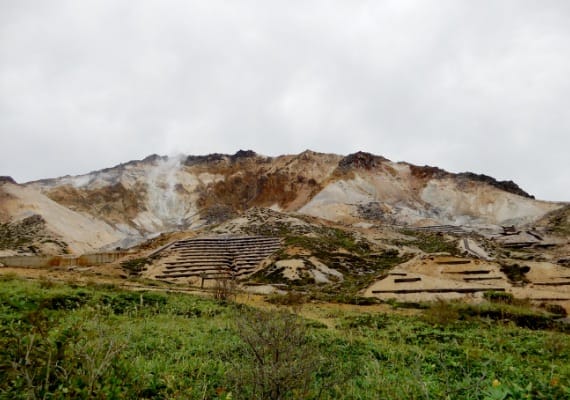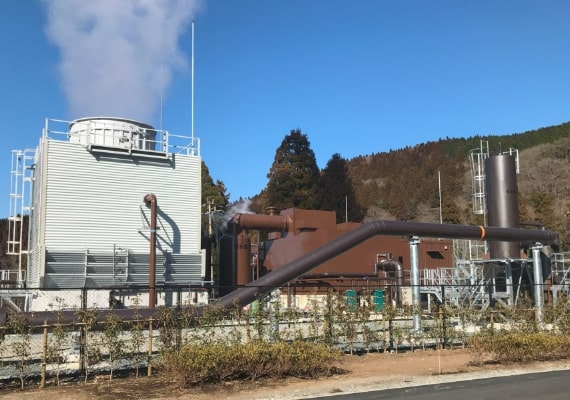Geothermal Power Generation
Japan is one of a handful of volcanically active countries in the world and has the third largest volume of
geothermal resources in the world after the United States and Indonesia (equivalent to around 23 million kW of
power output).
Promoting and achieving widespread adoption of geothermal power generation utilizing this national natural resource
will lead to a higher rate of energy self-sufficiency for Japan.
RENOVA is engaged in the proactive development of geothermal power plants at locations around Japan.
-
Features of Geothermal Power Generation
Geothermal power generation utilizes steam and water heated to high temperatures underground in volcanic areas to rotate turbine generators that produce electric power. Although the power generation capacity of geothermal power plants themselves is low in comparison with solar PV and wind power generation facilities, geothermal plants yield a large amount of electric power generated with respect to this capacity, making geothermal facilities highly efficient and stable power sources. They can also generate power continuously, 24 hours a day, day or night, regardless of weather conditions.

-
Mechanism of Geothermal Power Generation
There are two types of geothermal power plants: flash steam, in which steam is used directly to drive turbine generators, and binary cycle, in which the thermal energy of hot water is used to vaporize a working fluid medium with a lower boiling point via heat exchange. The vaporized fluid is then used to drive turbine generators. The majority of geothermal power plants in Japan—except those which utilize the heat from hot springs—use the flash steam approach. In both types of power plant, the hot water is returned to underground reservoirs after use.



